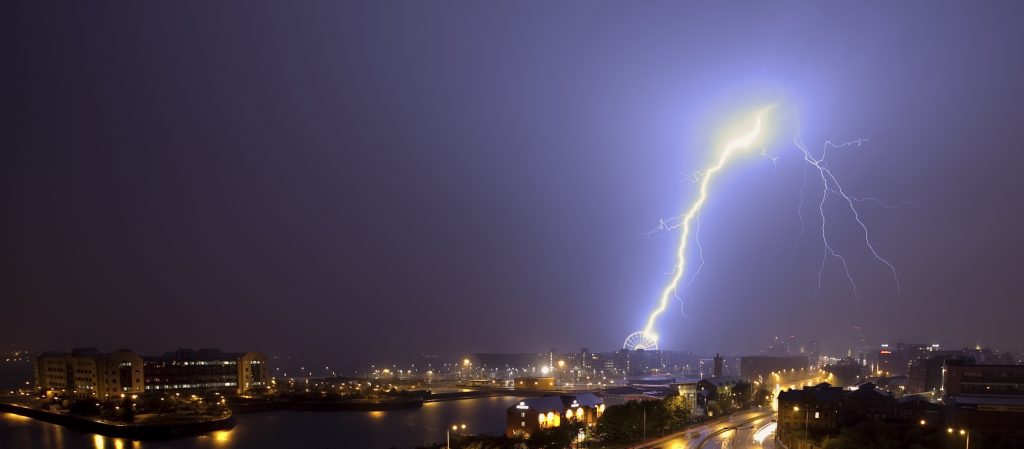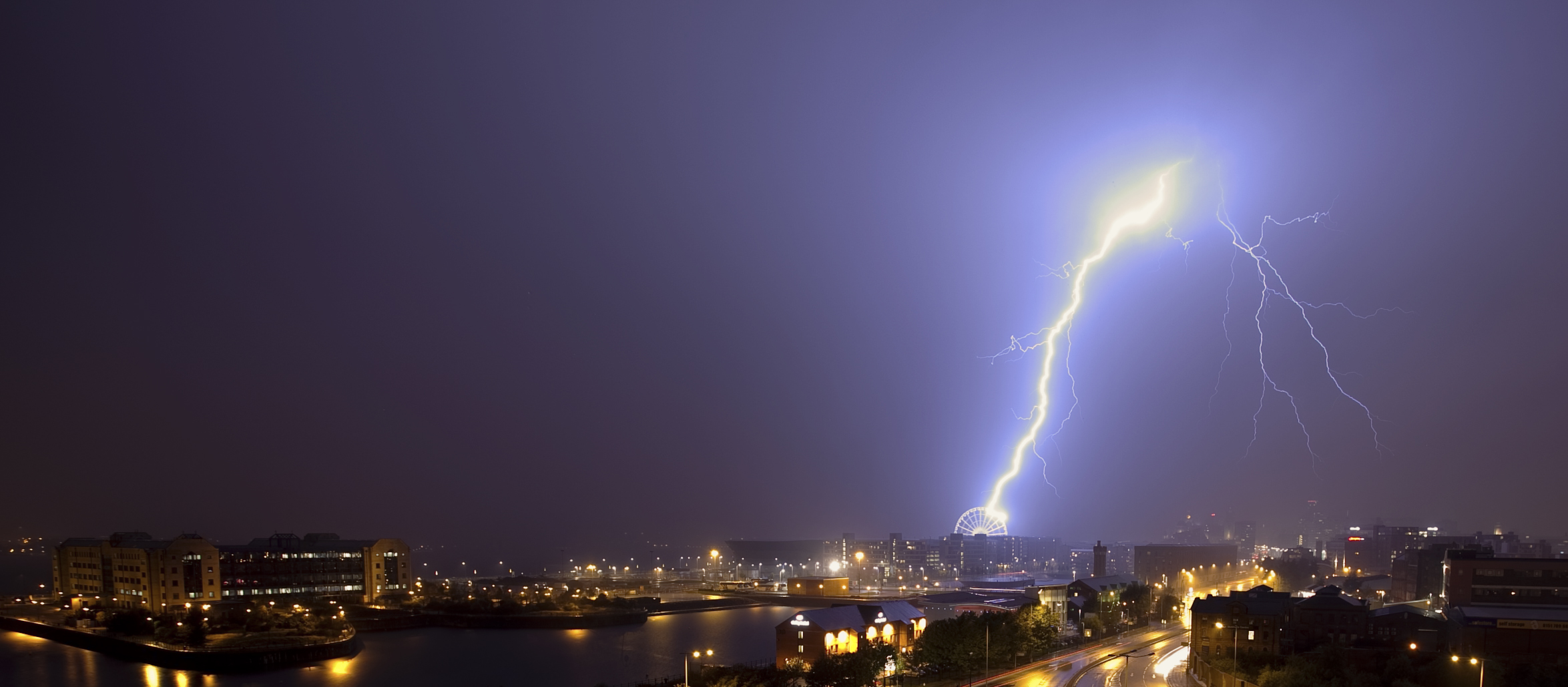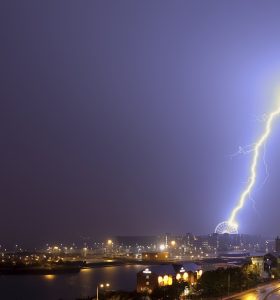
When an unexpected event happens people describe it as a “bolt from the blue”. The phrase is actually based on real weather phenomena where a lightning bolt will strike an area with no overhead clouds. While bolts from the blue don’t originate from blue sky, they occur infrequently, are unexpected, and can be deadly.
What is lightning and how does it form?
In order to explain how a bolt from the blue forms, we much first understand how lighting forms and what it is.
Simply put, lightning is an electrostatic discharge, which occurs during an electrical storm; think of a giant electrical spark which may occur when a charge jumps from one object to another.
Lightning occurs in three common forms (though there are ‘exotic’ types of lightning such as ball lightning). Intra-cloud lightning, cloud to cloud lightning, and cloud to ground lighting. A bolt from the blue is cloud to ground lighting.

The cause of the electrostatic discharge is not 100% proven. However, the prevailing theory is as follows; Uplifts of air within the clouds move particles towards the top. Consequently, these particles cool to form ice crystals such as hail. The crystals grow in size to a point where the uplift forces cannot continue to elevate them, as such they fall back down. While falling, the ice crystals ‘strip’ other particles of electrons. As a result, the ice crystals become negatively charged and fall to the bottom of the cloud. The smaller particles become positively charged (due to stripped electrons) and stay towards the top of the cloud. This forms an in-balance in the distribution of charge, with the lower section being more negatively charged, and the upper more positively.
Cloud to ground lightning
As the lower part of the clouds are negatively charged, and like charges repel each other, negative electrons in the ground are forced away, making the ground and some objects positively charged. This is when lightning can occur as the negative charge in the clouds travel to the positively charged ground or objects. This is a negative cloud to ground lightning strike and is commonly seen during lightning storms.
A bolt from the blue is still cloud to ground lightning. However, in contrast to a negatively charged lightning strike, a bolt from the blue usually starts from the top of a cloud which is positively charged. As such, it is a positive charge which flows, not a negative. It occurs when there is too much positive charge at the top of the cloud and a discharge is needed for balance. As a result of the charge being positive, the strike carries more power, can reach longer distances, and is hotter than a negative strike.
Why is a postive lightning strike more dangerous?
As previously mentioned, positive lightning strikes are far more powerful. As a result, when they do occur they can cause more damage. However, they are thought to only account for only 5-10% of lightning strikes.

It is not only the power that poses a danger, it is the unexpectedness. A bolt from the blue can strike as far as 40 km away from the nearest storm cloud. As a result, people in the open may not think they are at risk. For outdoor activities such as golf or working at heights, it is especially dangerous. Whereas, most people instinctively shelter when a storm is above them, reducing their exposure. Unfortunately for firefighters combatting bush fires, approaching storm clouds can be a double-edged sword. While the clouds may provide much-needed rain, during the summer a positive lightning strike is more likely, which may start a new bushfire.
Thankfully there are ways of detecting and warning against lighting strikes. Obviously, if thunder is audible then a storm is in the area and the chance for a bolt from the blue is elevated significantly. However, there are sensors and instruments capable of detecting the change in the charge of the surrounding atmosphere. Such sensors can be integrated with warning systems that send out emails or texts automatically, they can do this before the first strike.


